Edmund Rice's Dublin Trail
- Details
- Hits: 13864
Here you will find information about various Dublin establishments associated with Edmund Rice.
You could begin your walk at Edmund Rice House or the O'Connell's Schools, North Richmond Street (off the North Circular Road).
To help you plan your itinerary, see the map. Following the trail on Google Maps will, of course, be more user-friendly. The numbers on the map correspond to the numbered sections below.
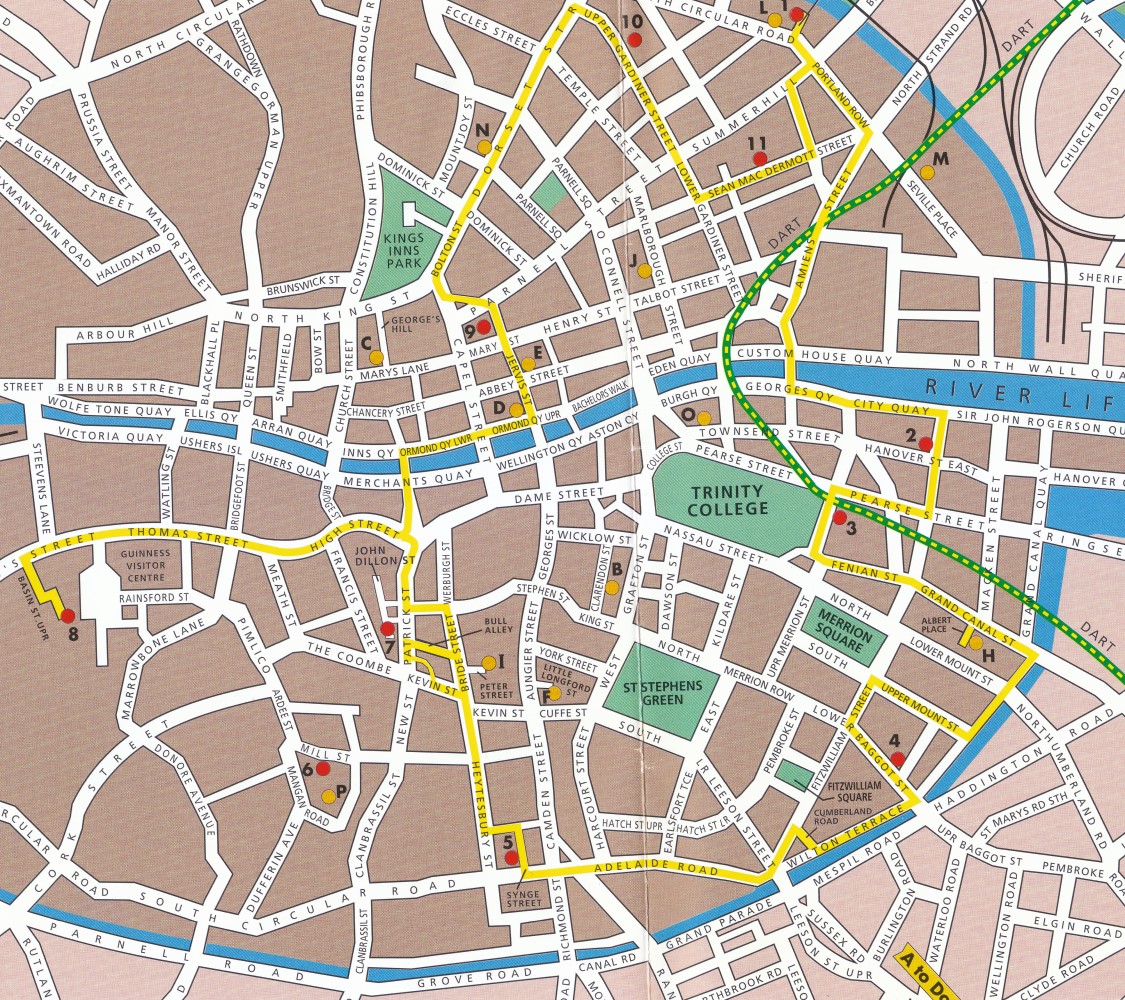
1. North Richmond Street
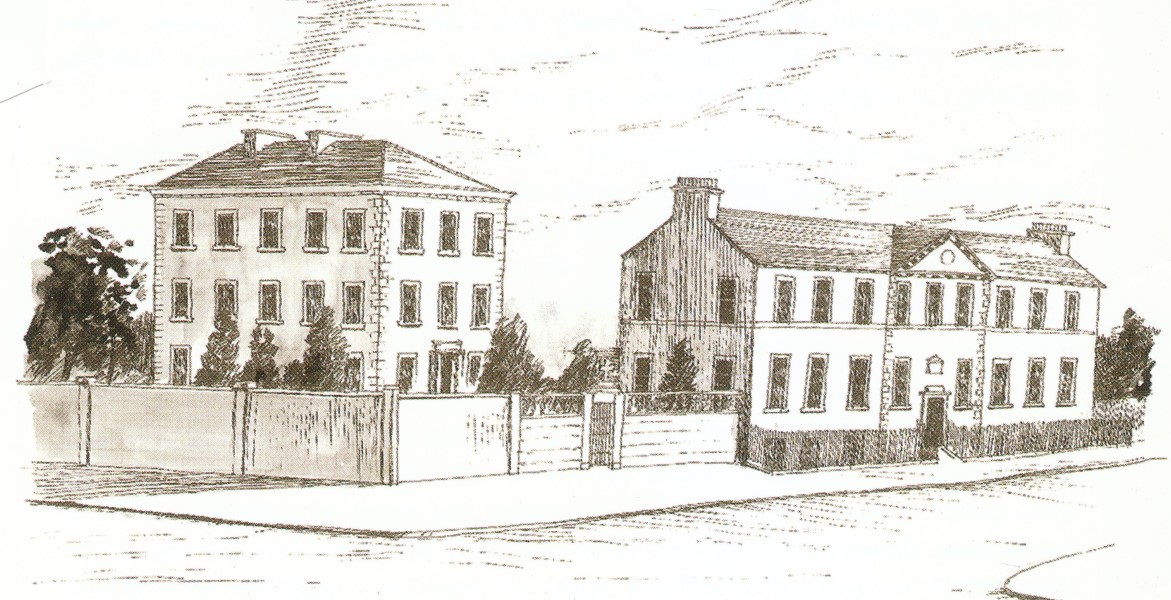 Edmund Rice arrived in Dublin in July 1826 with the aim of establishing a new headquarters for the Congregation of Christian Brothers, a novitiate to train new Brothers, and a model school where teachers could be trained.
Edmund Rice arrived in Dublin in July 1826 with the aim of establishing a new headquarters for the Congregation of Christian Brothers, a novitiate to train new Brothers, and a model school where teachers could be trained.
Catholic Emancipation had not yet been introduced and Br. Rice was aware of the obvious difficulty he would have in procuring a suitable site in the capital city. He enlisted the services of Mr. Bryan Bolger, an architect employed by Dublin Corporation. After many setbacks, a portion of the ground on which the present North Richmond Street house and the O'Connell's Schools stand was eventually secured.
Daniel O’Connell was invited to lay the foundation stone of the school in North Richmond Street on the 9th of June, 1828. Thousands became tens of thousands as many people arrived at the site to witness this important event. After laying the foundation stone, O’Connell addressed the large gathering, declared the occasion “a great and proud triumph to the cause of liberality" and referred to Br. Rice as the “Patriarch of the Monks of the West". On August 11th, 1828, Archbishop Murray laid the foundation stone of the North Richmond Street residence and novitiate.
Construction work was hampered by a lack of funds but eventually enough money was found to complete the residence and school by mid-1831. Edmund Rice, his two assistants, the Novice Master and four novices occupied the new residence on the 25th of June 1831. On the following day Archbishop Murray once again honoured the occasion by celebrating Mass in the chapel and blessing the buildings. A few weeks later the school was ready for the registration of pupils.
Edmund Rice resided at North Richmond Street until 27 February 1838 when failing health forced him into retirement. He returned to Waterford city where he died on 29 August 1844 at the age of eighty-two.
2. Hanover Street
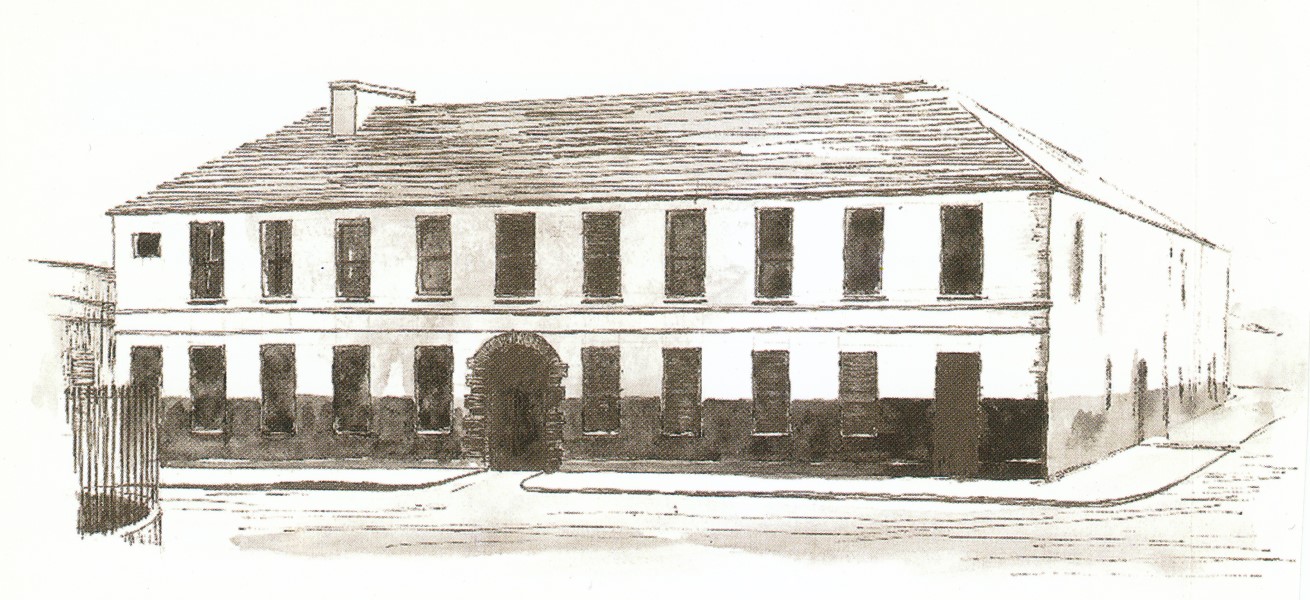 The first of Edmund Rice’s foundations in Dublin was in the parish of St. Andrew in 1812. At the request of Archbishop Murray, two Brothers were sent from Waterford, one being Br. Thomas John Baptist Grosvenor, a companion of the Founder. Originally they lived in Moira Place, now called Albert Place, off Grand Canal Street. They attended Mass in the nearby Townsend Street chapel until St. Andrews church was completed in 1837.
The first of Edmund Rice’s foundations in Dublin was in the parish of St. Andrew in 1812. At the request of Archbishop Murray, two Brothers were sent from Waterford, one being Br. Thomas John Baptist Grosvenor, a companion of the Founder. Originally they lived in Moira Place, now called Albert Place, off Grand Canal Street. They attended Mass in the nearby Townsend Street chapel until St. Andrews church was completed in 1837.
The first school was located in a timber yard on Sir John Rogerson Quay where the proprietor allowed the Brothers the use of a large shed for classrooms. Eventually a more serviceable building was rented at the corner of Hanover Street East and Lime Street. It had two floors and was built around a square with a courtyard in the middle. The Brothers lived in that part of the building facing Hanover Street, presumably upstairs. The upper floor on the other three sides provided classrooms and a lecture hall which accommodated 400 boys.
The rent was met partly by an annuity from Archbishop Murray, annual charity sermons, a house-to-house collection and the rents of the under-tenants. Daniel O’Connell and Richard Lalor Sheil often assisted with the collection at the annual charity sermons.
In 1828 Edmund Rice took up residence in Hanover Street with his two assistants to oversee the building of North Richmond Street. The Novitiate was also transferred here from Mount Sion. He stayed at Hanover Street until the North Richmond Street house was completed in 1851.
Despite repeated attempts by the Brothers to secure its future, the school was finally closed in 1844 due to lack of funding.
3. Westland Row
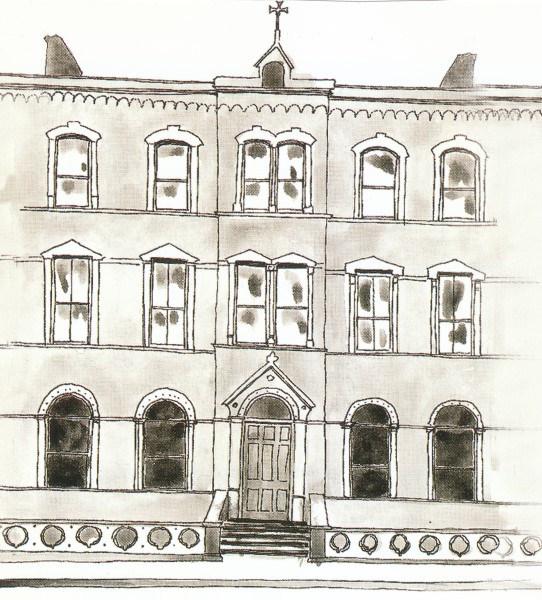 Cardinal Cullen invited the Brothers to return to the parish of St. Andrew in 1864 to take charge of the parish school located at the rear of St, Andrews church. Over 400 pupils sought admission. The Brothers resided at No. 9 Townsend Street until suitable living quarters could be erected.
Cardinal Cullen invited the Brothers to return to the parish of St. Andrew in 1864 to take charge of the parish school located at the rear of St, Andrews church. Over 400 pupils sought admission. The Brothers resided at No. 9 Townsend Street until suitable living quarters could be erected.
The Cardinal subscribed £100 towards the building of the Brothers’ new residence and laid the foundation stone. The building was completed in December 1868.
Pádraig Pearse, one of the leaders of the 1916 Rising, is the school’s best known past pupils. He and his brother William attended school here during the 1890s. Padraig later taught Irish at the school as a pupil-teacher, while at the same time studying at university. His love of the Irish language and literature was inspired by his native Irish-speaking teachers, Brothers Maunsell and Craven. In an editorial in “An Claidheamh Soluis", the official journal of the Gaelic League, Pearse described the Christian Brothers as the most important and successful body of educationalists in Ireland.
4. Baggot Street Convent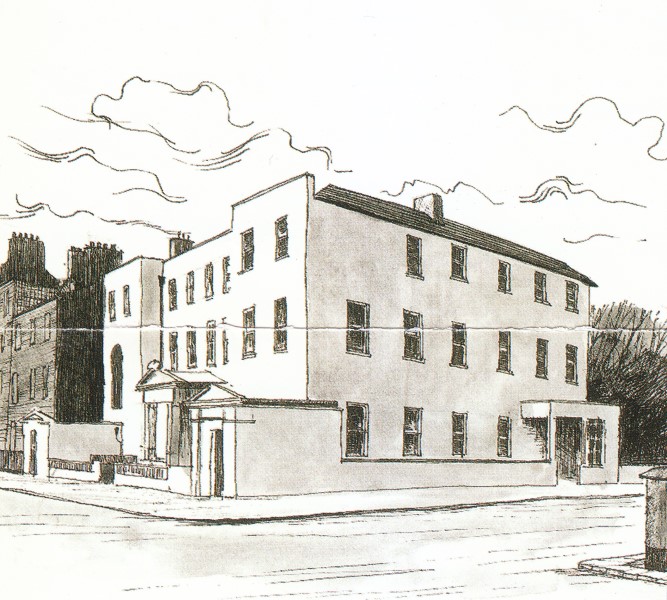 Catherine McAuley, foundress of the Sisters of Mercy, was a contemporary of Edmund Rice. In September 1827 Catherine established a centre at Baggot Street, an affluent area on the south side of the city. Assisted by a number of companions, she provided food, clothing, hospitality and education for many of Dublin’s poor.
Catherine McAuley, foundress of the Sisters of Mercy, was a contemporary of Edmund Rice. In September 1827 Catherine established a centre at Baggot Street, an affluent area on the south side of the city. Assisted by a number of companions, she provided food, clothing, hospitality and education for many of Dublin’s poor.
Daniel O'Connell, a friend of both Catherine McAuley and Edmund Rice, served food to the poor in Baggot Street on Christmas Day 1828.
In 1831 this community of lay women became the Congregation of the Sisters of Mercy and the Baggot Street premises became their first convent and mother house. Catherine was professed in the Presentation Convent at George’s Hill in 1836. Today Baggot Street Convent is home to the Mercy International Centre.
5. Synge Street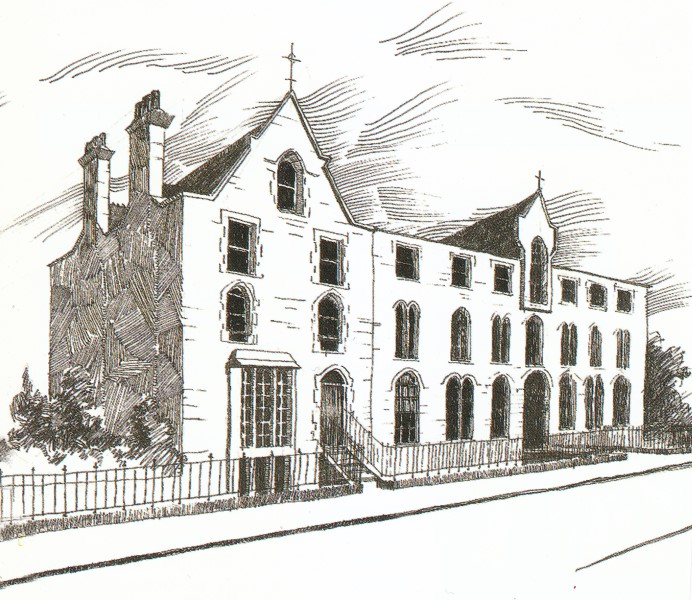 Synge Street school and residence which opened in 1864 was without doubt the inspiration of Br. Edward Patrick O’Flaherty, Director of Francis Street. The foundation stone was laid by Archbishop Cullen. Peter McSwiney, Lord Mayor of Dublin at the time, was one of the first people to enroll his son in the school. By the following year 600 pupils were on the roll books.
Synge Street school and residence which opened in 1864 was without doubt the inspiration of Br. Edward Patrick O’Flaherty, Director of Francis Street. The foundation stone was laid by Archbishop Cullen. Peter McSwiney, Lord Mayor of Dublin at the time, was one of the first people to enroll his son in the school. By the following year 600 pupils were on the roll books.
Since its foundation many additions have been made to the school. At present it occupies a large part of the rectangular piece of land enclosed by Synge Street, Harrington Street, Heytesbury Street and Grantham Street.
6. Mill Street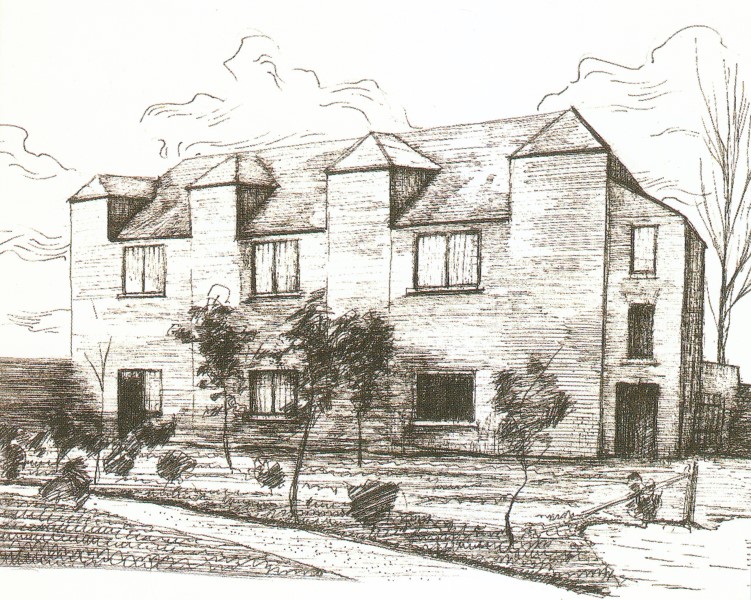 Mill Street was the location of the second foundation of the Brothers in Dublin. No. 10 Mill Street, which once served as the Earl of Meath’s townhouse, became the residence of the Brothers in 1818.
Mill Street was the location of the second foundation of the Brothers in Dublin. No. 10 Mill Street, which once served as the Earl of Meath’s townhouse, became the residence of the Brothers in 1818.
The school consisted of four large classrooms in the garden at the rear of No. 10.
In 1822 Edmund Rice undertook his first general visitation of the Brothers’ houses. At Mill Street he found 500 boys on the roll. The school received favourable notice in government education committee reports in the 1850s.
Br. Edward Patrick O’Elaherty (1797-1882) joined the community at Mill Street in 1825. He taught there for about ten years and was then sent to Gibraltar. He returned to Mill Street as Director in 1840.
The dilapidated state of the premises and the cost of refurbishment led to the closure or Mill Street. In 1846 the Brothers moved to a new location in Francis Street. While visiting the Mill Street community, Edmund Rice often attended Mass in nearby Warrenmount Carmelite Convent, now a Presentation Convent.
7. Francis Street
By 1844 the Mill Street property needed extensive and costly repairs. Fr. Matthew Flanagan of St. Nicholas’s parish offered a site next to his new church off Francis Street and the school was opened in 1846. The Brothers used the top storey of the building as a residence.
The school soon became overcrowded as five Brothers tried to cope with approximately 600 children. By the 1860’s this overcrowding led to plans for an additional school. A temporary chapel was erected in Harrington Street in 1862 to cater for a growing population. In 1865 the new parish of St. Kevin was constituted and a new church built. The land obtained for the church extended to Synge Street and was large enough to accommodate a school and residence.
In 1864 the Brothers went to live in Synge Street. The old school in Francis Street continued as a branch school. Renovation work was carried out in 1957 and a new building on the same site was opened in 1961 and is still in use today.
8. James’ Street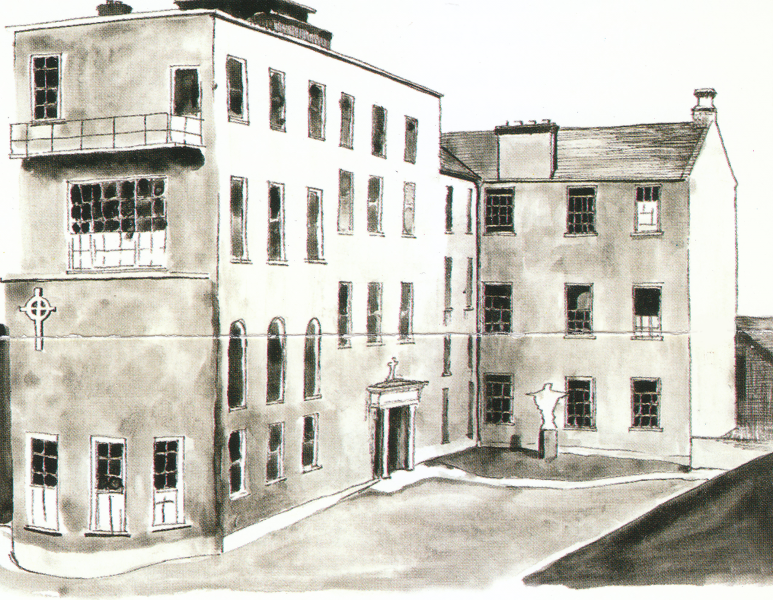 In 1820 Edmund Rice agreed to establish another community in Dublin, this time in James’ Street. Two Brothers were assigned to the new foundation and Br. Francis Manifold was appointed Director.
In 1820 Edmund Rice agreed to establish another community in Dublin, this time in James’ Street. Two Brothers were assigned to the new foundation and Br. Francis Manifold was appointed Director.
The schoolhouse was located in a large yard at the back of a shop at No. 69 James’ Street. At the time of Edmund Rice’s 1822 visitation, there were about 200 boys in attendance. Some were so poor that clothing had to be provided for them and many were given breakfast at the school. An evening and Sunday school were also conducted. The Brothers resided nearby in rented accommodation.
The community was faced with many financial problems. The Brothers lived for a while with the Mill Street community and travelled daily to the school in James’ Street.
By 1852 the schools financial difficulties led to its closure and No. 69 was sold to the world-famous Guinness Brewery.
In 1869 a replacement was established nearby. Four classrooms and a residence were built at Upper Basin Street. The interest on the money obtained from the sale of the former school to Guinness was used to finance the project.
9. No. 24, Jervis Street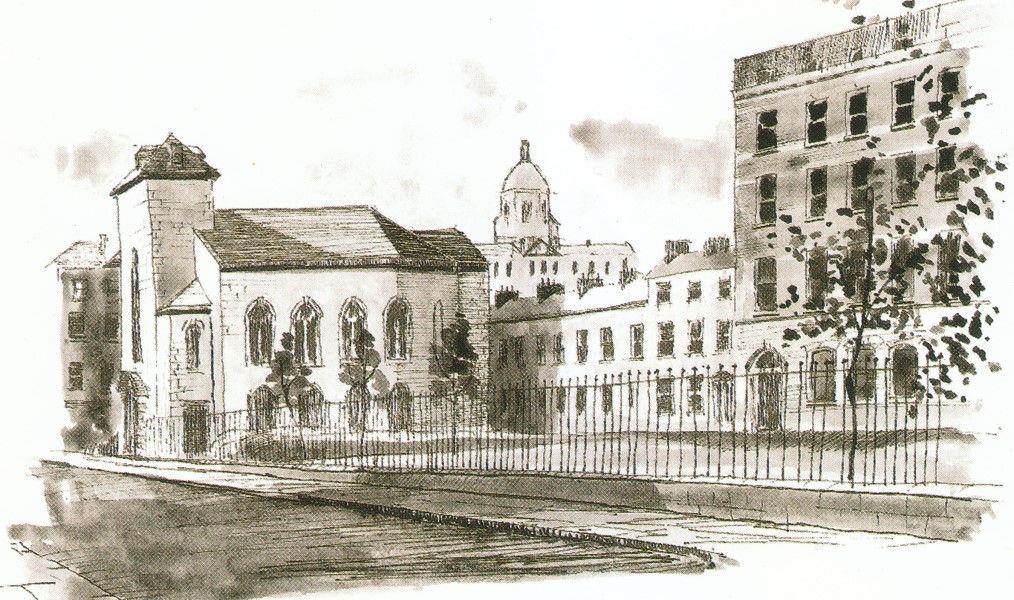 (The drawing shows Jervis Street hospital.)
(The drawing shows Jervis Street hospital.)
In 1827 Archbishop Murray was urged by the parishioners of the united parishes of St. Mary, St. Thomas and St. George to address the question of schooling in the area. Out of 5000 Catholic children in the parish of St. Mary, 2000 received no education while the remainder attended non-Catholic schools.
Edmund Rice and the Archbishop, with the help of Bryan Bolger, continued their search for a suitable site for a new Christian Brothers’ model school and headquarters. Sufficient funds had been raised in 1827 to rent No. 42 Jervis Street as a temporary measure. Two classrooms were provided and Br. Bernard Dunphy and Br. Bernard Duggan from Hanover Street took charge of them. The school was opened on 19 June 1827 and 400 boys were enrolled.
It is an indication of the poverty of that time that roughly a third of the pupils could not afford to pay the voluntary contribution of a halfpenny per week. The number of pupils quickly rose to 600 and it became necessary to provide a third classroom. The Brothers gave religious instruction at the school on Sundays. Some members of the community from Hanover Street spent part of each Sunday and Holyday visiting Jervis Street Hospital where they gave religious instruction in the male wards. During his time in Hanover Street Edmund Rice often accompanied them.
Nearby in No. 64, Fr. Thomas John Baptist Grosvenor, who as a Brother had been the Director of Hanover Street before his ordination, taught in a renowned classical school. One of the pupils in No. 64 was Richard Maxwell who later became the fourth Superior General of the Congregation. Jervis Street school closed in 1851 when the new school and residence were opened at North
Richmond Street.
10. St. Francis Xavier Church, Gardiner Street
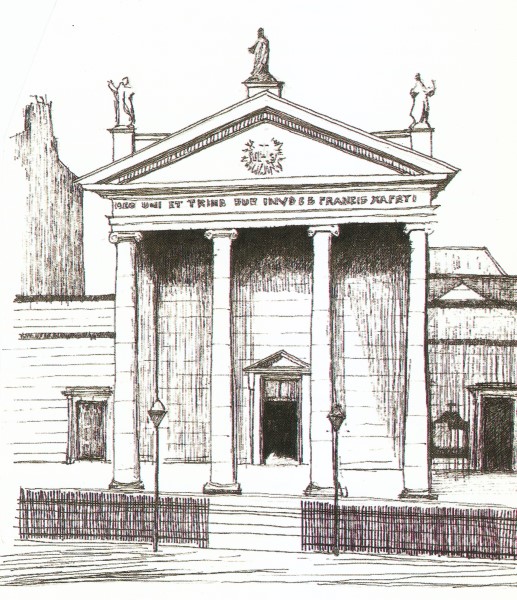 In 1827 the Sisters of Charity acquired a site in Gardiner Street from Archbishop Murray for their new schools. Not all the land was needed so the Superior of the Jesuit community at Hardwicke Street offered to lease the land and build a church there. The first stone of St. Francis Xavier Church was laid in July 1829 and it was opened in May 1852 by the Archbishop.
In 1827 the Sisters of Charity acquired a site in Gardiner Street from Archbishop Murray for their new schools. Not all the land was needed so the Superior of the Jesuit community at Hardwicke Street offered to lease the land and build a church there. The first stone of St. Francis Xavier Church was laid in July 1829 and it was opened in May 1852 by the Archbishop.
Edmund Rice, while residing at North Richmond Street, regularly attended Mass here. He was known for his generosity, often giving gifts to the poor on his way to and from Mass.
Br. Bernard Duggan was sent by Edmund Rice to the school in Gardiner Street, at the request of the Sisters, to assist them with school management. He later helped in the production of Christian Brothers’ text books and became Director of the North Monastery in Cork.
St. Mary’s, Marino
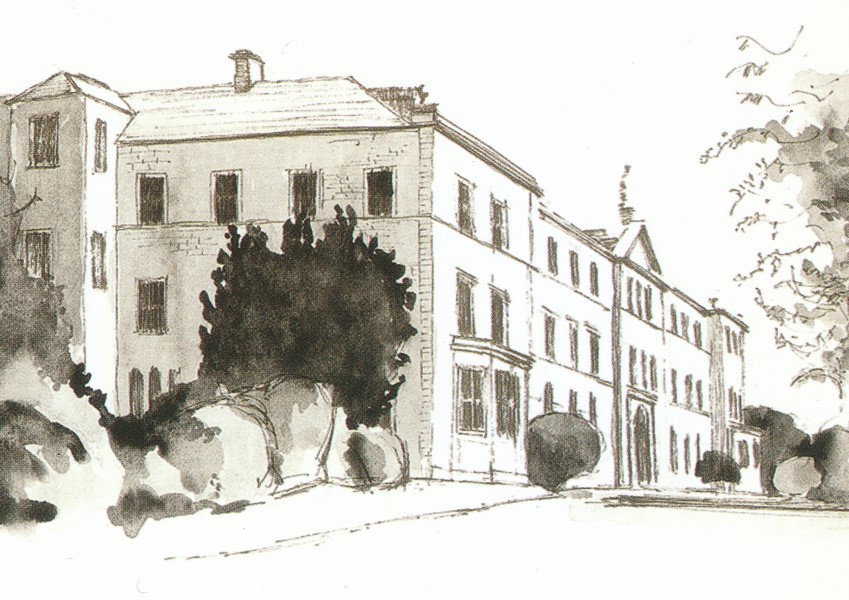 In 1874 the Christian Brothers’ headquarters and the novitiate were transferred from North Richmond Street to Belvedere House, Drumcondra, now on the campus of St. Patrick’s College (part of the DCU Institute of Education).
In 1874 the Christian Brothers’ headquarters and the novitiate were transferred from North Richmond Street to Belvedere House, Drumcondra, now on the campus of St. Patrick’s College (part of the DCU Institute of Education).
The Brothers remained here until 1885 when the Superior General, his council, the novitiate and training college all moved to Charlemont House, Marino. It was replaced by a new building, St. Marys, in 1904 and the old house was demolished. All these buildings now constitute the Marino Institute of Education.







